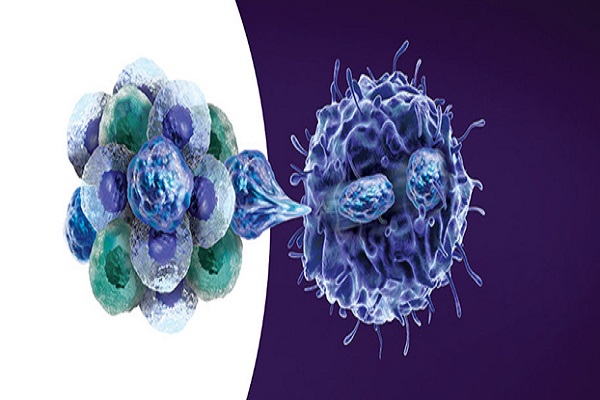COMBINATION THERAPY TARGETS PANCREATIC CANCER STEM CELLS
A new drug combination tested in mice may target the cells responsible for driving some pancreatic tumors. The combination of gemcitabine and the experimental drug tigatuzumab eliminated populations of cancer stem cellsand reduced tumor growth in a mouse model of pancreatic cancer, researchers from the Johns Hopkins Sidney Kimmel Cancer Center reported at the AACR annual meeting.
A new drug combination tested in mice may target the cells responsible for driving some pancreatic tumors. The combination of gemcitabine and the experimental drug tigatuzumab eliminated populations of cancer stem cellsand reduced tumor growth in a mouse model of pancreatic cancer, researchers from the Johns Hopkins Sidney Kimmel Cancer Center reported at the AACR annual meeting.
The results provide a rationale for testing the promising combination in patients with this deadly disease, Dr. Rajesh Kumar NV and his colleagues concluded.
Cancer stem cells are thought to self renew while giving rise to tumors, and they may resist conventional treatments. The researchers found that human pancreatic cancer stem cellsoverexpress a protein called death receptor-5 (DR-5), which is involved in programmed cell death (apoptosis). The protein is also the target of tigatuzumab, a humanized monoclonal antibody also known as CS-1008.
To evaluate the drug’s effects on these important cells, mice were given tigatuzumab alone, gemcitabine alone, or a combination. Although gemcitabine reduced tumor size, it increased levels of pancreatic cancer stem cells (as defined by the protein markers ALDH, CD24, and CD44), and all of the tumors recurred. The combination treatment, however, led to long-term remissions in half of the treated mice.
In addition, cancer stem cells were eliminated in mice that received tigatuzumab plus gemcitabine, which is the first-line treatment for patients with advanced pancreatic cancer. “It appears that tigatuzumab may be one of the first monoclonal antibodies to target cancer stem cells,” said Dr. Kumar NV. The drug is being tested in a phase II clinical trial with patients who have inoperable, untreated pancreatic cancer.
Potential Treatment for Brain Cancer Identified
Researchers have identified a potential drug for treating brain cancer that appears to have effects on both tumors and the growth of blood vessels (angiogenesis) that provide essential nutrients and oxygen to the tumors. Growing evidence suggests this strategy may be important for treating glioma brain tumors, as it is for other cancers. In preclinical studies, the compound, 2.5-dimethyl-celecoxib, crossed the blood-brain barrier and inhibited both tumors and angiogenesis.
“Here you have a single drug that attacks both tumor cells and tumor blood vessels, and it can be used over the long term,” said Dr. Florence Hofman of the University of Southern California Keck School of Medicine. The drug is not a COX-2 inhibitor, a family of drugs that has been associated with prohibitive side effects, and therefore it could potentially be used over several years rather than months.
While dimethyl-celecoxib is not expected to be a cure for brain cancers, the drug or a similar agent could extend survival for patients with this deadly disease by up to several years, the researchers said Sunday at the AACR annual meeting. They suggest that it may also have potential to treat tumors that spread to the brain and depend on the growth of blood vessels.
“We’re learning that the blood vessel target is critical in treating this cancer,” said Dr. Hofman. “And we think that our way of getting at the target has advantages over other approaches.”
References:http://www.stem-cells-news.com/1/combination-therapy-targets-pancreatic-cancer-stem-cells/





ارسال به دوستان